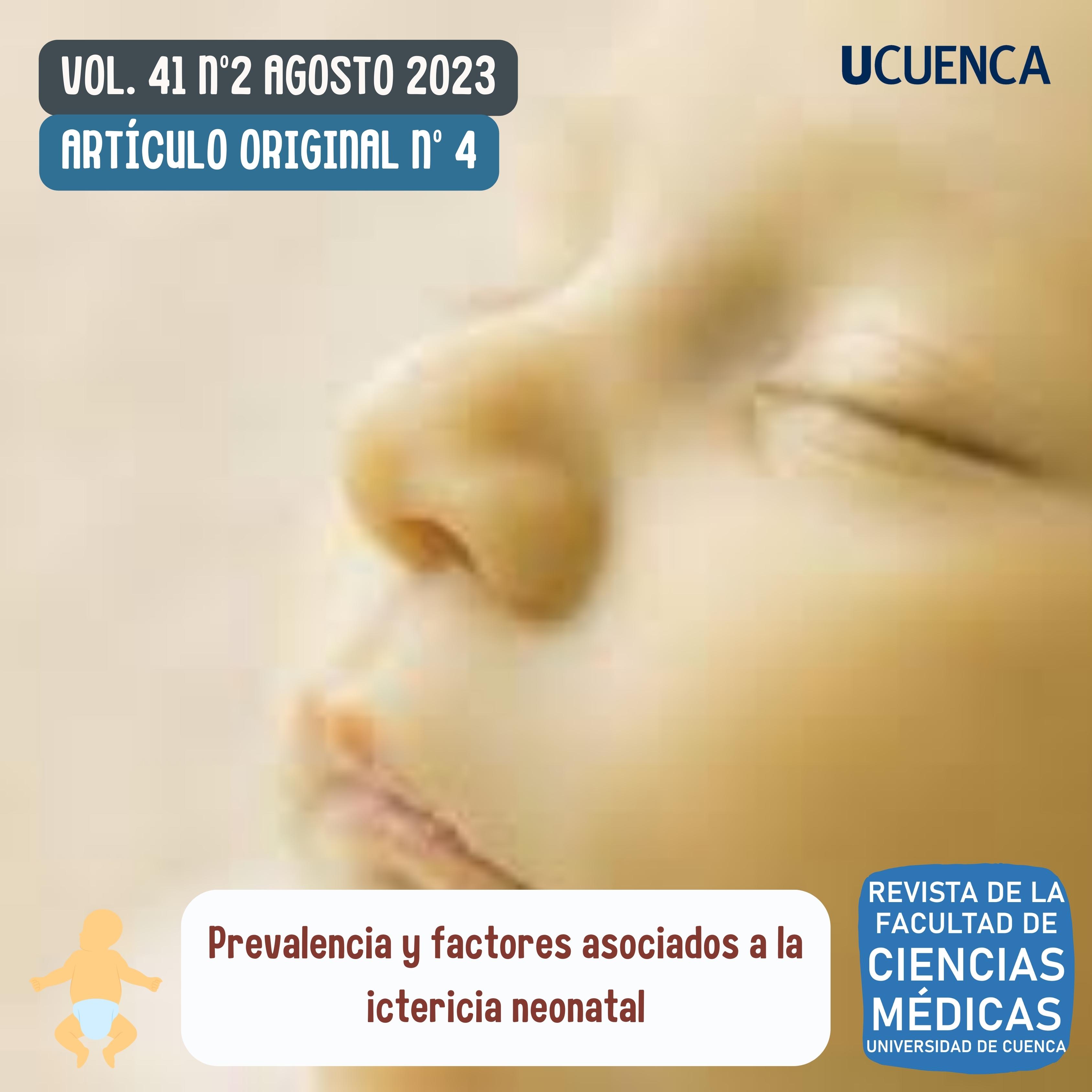Prevalencia y factores asociados a la ictericia neonatal
DOI:
https://doi.org/10.18537/RFCM.41.02.05Keywords:
infant newborn, jaundice, hyperbilirubinemiaAbstract
The study conducted at the Carlos Elizalde Health Center from January 2019 to December 2020 focused on analyzing the prevalence and associated factors of neonatal jaundice, a common condition in newborns that results in yellowing of the skin and other tissues due to increased bilirubin levels. This condition is evident in the skin when total serum bilirubin exceeds 6-8 mg/dl. It is a clinical sign seen in 60% of term and near-term neonates and 80% of preterm infants during their first week. The analysis was based on a descriptive, retrospective, cross-sectional design, with data extracted from the RDACAA Management System of the Ministry of Public Health of Ecuador, using medical records of mothers and neonates. The sample consisted of 203 newborns who met the inclusion criteria. The results showed that 49% of the neonates presented clinical jaundice, with physiological jaundice being the most common. The main associated factors were the age of the newborn, ABO blood incompatibility and presence of pathologies, finding no relationship with other maternal and neonatal factors. It is concluded that neonatal jaundice in this population was predominantly physiological, being the age of the neonate, ABO incompatibility and the presence of pathologies the most significant risk factors.
Downloads

Published
Issue
Section
License
Copyright (c) 2023 Reina Macero, Joseline Piedra, Grace Plaza

This work is licensed under a Creative Commons Attribution-NonCommercial-ShareAlike 4.0 International License.
Copyright © Autors.

You are free to:
 |
Share — copy and redistribute the material in any medium or format |
 |
Adapt — remix, transform, and build upon the material for any purpose, even commercially. |
Under the following conditions:
 |
Attribution — You must give appropriate credit, provide a link to the licence, and indicate if changes were made. You may do so in any reasonable manner, but not in any way that suggests the licenser endorses you or your use. |
| NonCommercial — You may not use the material for commercial purposes. | |
| ShareAlike — If you remix, transform, or build upon the material, you must distribute your contributions under the same license as the original. |
| No additional restrictions — You may not apply legal terms or technological measures that legally restrict others from doing anything the licence permits. |





